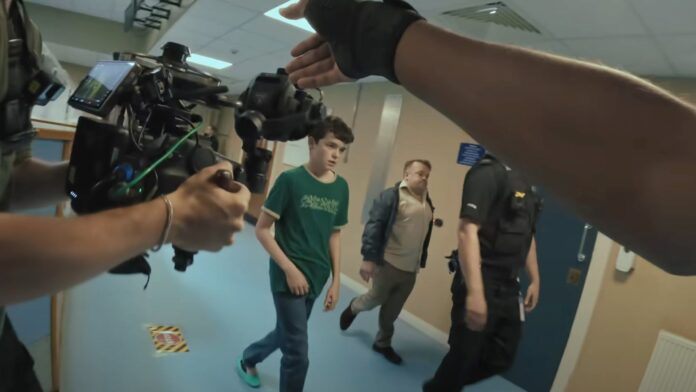Adolescence is causing a global fever and the way the crew made it is even more shocking than the content of the film.
The blockbuster that made the whole world crazy: The score is so high, setting an unprecedented record
This is not only a technique but also an art of storytelling, helping the audience experience moments in real time, increasing the authenticity and emotion of the film. Many works have used this technique to create impressive scenes, from Birdman (2014) by Alejandro G. Iñárritu, 1917 (2019) by Sam Mendes, to Children of Men (2006) by Alfonso Cuarón. But few films dare to take a bold step like Adolescence – a four-episode series on Netflix that is causing a global fever. Because each episode of Adolescence is filmed entirely in a single shot, without any editing.
This ambition not only placed strict technical demands on the crew, but also challenged the creative ability of the film crew. Each shot had to be carefully calculated to ensure a natural rhythm, while maintaining visual appeal. The lack of cut points meant there was no room for error – even a small mistake could ruin the entire scene and require a reshoot. This is the appeal and also the greatest challenge of one-shot: it is not just a way of filming, but also an artistic challenge that requires perfect coordination between all members of the crew.
In Adolescence, director Philip Barantini and cinematographer Matthew Lewis faced one of the biggest challenges of the one-shot technique: ensuring continuity in camera movement without disrupting the rhythm of the film. Lewis asserted: “There are no stitched shots. Each episode is a single shot, whether I want it to be or not.”
With no editing tricks used to join the shots, everything had to be carefully prepared. The script, written by Jack Thorne, was constantly tweaked during rehearsals, as the crew realized that some transitions didn’t work. One of the biggest challenges was connecting different scenes naturally. For example, in the first episode, the opening scene is a police raid on the main character’s house, which then leads to his journey to the police station. To do this scene, the crew had to find an area where both the house and the set were close together, helping them maintain the continuity of the scene.
Shocking behind-the-scenes secrets of the blockbuster that is causing a global fever: 4 expensive shots that no one in the world has dared to do – Photo 2.
Adolescence’s difficulties are not unique to the filmmaking world. Previously, Sam Mendes’ 1917 used the one-shot technique to create a real-time feeling on the battlefield. Unlike Adolescence, however, this war film uses a number of invisible cutaways to facilitate the filming process. Another film is Birdman (2014), which uses a single-take style to immerse the audience in the main character’s troubled inner world. These films all show that one-shots are not only a technical challenge, but also a means to convey powerful emotions.
One of the most complex episodes of Adolescence is Episode 2, which takes place in a real school with hundreds of child actors. Coordinating the crowd so that the camera can move naturally without causing chaos is an extremely difficult task. Assistant directors have to act as teachers, guiding students to move at the right time when the camera is not on them. At the same time, the technical team set up a complex signal connection system that allowed the director to monitor the entire scene even as the camera moved through different areas of the school.
These challenges are not far from what the crew of Rom (2020) by director Tran Thanh Huy encountered when making long shots on the streets of Saigon. This film used many long takes (long, uncut shots) to depict the hustle and bustle of street boys, helping the audience feel more clearly the harshness of sidewalk life. Although not a complete one-shot like Adolescence, Rom still demonstrates the spirit of this technique: a way of filming that helps create authenticity and immerses the audience in the world of the character.
